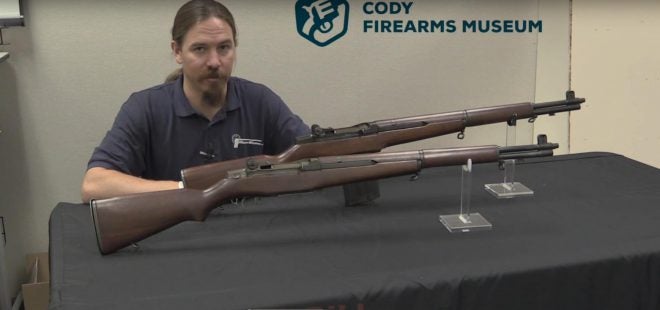In the fourth part of the series of articles I am writing on the Lightweight Rifle program of the 1940s and ’50s, we looked at some of the experimental rifles that were being tested and evaluated during and just after World War II as potential replacements for or upgrades to the excellent M1 Garand semiautomatic rifle. The goal of these programs was ambitious: To create a rifle – based on the M1 – that would provide all the functions of the military infantry rifle, submachine gun, and automatic rifle, thereby achieving the “all in one” squad level infantry small arms package. This concept was called the “paratroop rifle”, possibly in reference to the German Fallschirmjeagergewehr (translated: paratroop rifle) FG-42 which itself was designed as an “all in one” weapon for paratroops.
Two contracts were let, one to Springfield Armory, and the other to Remington Arms Co., but Winchester’s CEO Edwin Pugsley also caught wind of these developments and was determined that Winchester would also embark on its own program to create a select-fire, box magazine fed M1 derivative, resulting in an effort that would be led by talented Winchester (and later Ruger) designer Harry Sefried. Two of the prototypes created in this effort are covered in the Forgotten Weapons video below:
While it’s true that Winchester had no formal contract for these rifles, the program to develop a “paratroop rifle” was a formal program, and very nearly resulted in the adoption of a new infantry weapon: Springfield Armory’s T20E2. This rifle was recommended for production in a quantity of 100,000 for the upcoming invasion of the Japanese home islands, and likely would have been standardized as the U.S. Rifle, Cal. .30, M2. However, the atomic bombs ended the war before this could happen, and the program continued as a development program for another 12 years before any of the fruits of its labor would eventually be adopted – resulting in the short-lived M14.
If you’re interested in Winchester’s program to develop a select-fire M1 Garand variant, you can read my article Light Rifle, Part IV: The M1 Garand Learns To Rock And Roll. I also recommend checking out Sefried’s patents on the mechanisms used in these rifles, US2464418 and US2386722.
 Your Privacy Choices
Your Privacy Choices
